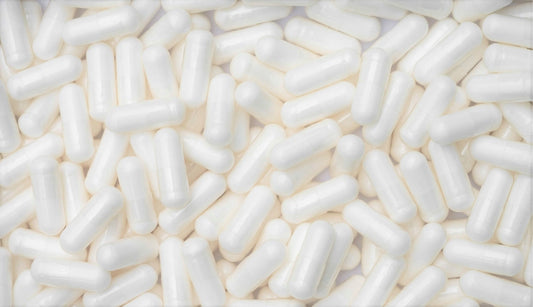Lorem ipsum
1
You have saved personalized supplements. Would you like to add them back to your cart?
£0.00 GBP
Your cart total must be £20.00 or more to proceed.
1tablet
• Acts as a powerful antioxidant
• Supports brain health and cognitive function
• Contributes to heart, skin, bone, and liver health
Couldn't load pickup availability
 Vegan
Vegan
 Vegetarian
Vegetarian
 GMP
GMP
 Non-GMO
Non-GMO
 Gluten Free
Gluten Free
Vitamin E is a fat-soluble vitamin that comes in two types of nutrients – tocopherols and tocotrienols. It's primarily known for its strong antioxidant properties, helping to protect the body's cells from damage caused by oxidative stress. Found in a variety of foods, but particularly oils like wheat germ and rice bran, Vitamin E is a vital nutrient that our bodies need to maintain good health.

Skin protector
Vitamin E's primary function is its role as a lipid-soluble antioxidant. It is integrated into the cell membrane, protecting polyunsaturated fatty acids (PUFAs), like omega-3, from peroxidation by free radicals. This is crucial because PUFAs are vital cell membrane components, and their oxidation can lead to cell damage or death.
Moreover, Vitamin E can also inhibit protein kinase C (PKC) activity, an enzyme involved in cell proliferation and differentiation, thus playing a potential role in preventing diseases such as cancer.
Tocotrienols, a specific type of Vitamin E, have been shown to possess antioxidant, anti-inflammatory, anticancer, neuroprotective, skin-protective and cholesterol-lowering properties, which are often superior to tocopherols. This is likely due to their better distribution in the lipid layers of the cell membrane.
However, it's worth noting that tocotrienols are less studied than tocopherols, so while early research is promising, more studies are needed to understand their role and benefits fully.
You may experience improvements in skin health, including more radiant, resilient skin. It's harder to discern the internal benefits, but knowing you're supplying your body with a potent antioxidant to neutralise harmful free radicals is beneficial.
Take 1 tablet daily with food and water, unless specified otherwise on the sachet.
* Percent Daily Values are based on a 2,000 calorie diet.
† Daily Value not established.
Microcrystalline Cellulose, Dicalcium Phosphate, Anti-Caking Agents: Silicon Dioxide, Magnesium Stearate
Publications you might find interesting

1. Traber, M. G., & Atkinson, J. (2007). Vitamin E, antioxidant and nothing more. Free Radical Biology and Medicine, 43(1), 4-15.
2. Jiang, Q. (2014). Natural forms of vitamin E: metabolism, antioxidant, and anti-inflammatory activities and their role in disease prevention and therapy. Free Radical Biology and Medicine, 72, 76-90.
3. Sen, C. K., Khanna, S., & Roy, S. (2006). Tocotrienols in health and disease: the other half of the natural vitamin E family. Molecular Aspects of Medicine, 28(5-6), 692-728.
4. Aggarwal, B. B., Sundaram, C., Prasad, S., & Kannappan, R. (2010). Tocotrienols, the vitamin E of the 21st century: its potential against cancer and other chronic diseases. Biochemical Pharmacology, 80(11), 1613-1631.
5. Patel, V., Rink, C., Gordillo, G. M., Khanna, S., Gnyawali, U., Roy, S., ... & Sen, C. K. (2012). Oral tocotrienols are transported to human tissues and delay the progression of the model for end-stage liver disease score in patients. The Journal of Nutrition, 142(3), 513-519.

Gain access to your own data driven dashboard, health reports and personalised supplement plans.


• Supports cellular health and longevity
• Boosts NAD function
• Promotes skin health and elasticity

